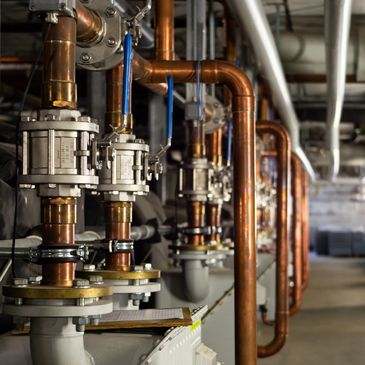Crucial Concerns to Ask Your Air Conditioning Contractor in Brownwood TX
Crucial Concerns to Ask Your Air Conditioning Contractor in Brownwood TX
Blog Article
The Significance of HVAC Installment: Key Factors To Consider for a Comfy Indoor Atmosphere
The setup of a HVAC system is a vital element in attaining a comfy and energy-efficient interior setting. Factors such as the viability of the system for details structure demands, appropriate sizing to prevent ineffectiveness, and the knowledge of service providers for a high quality installation play essential duties. The fostering of advanced technologies can dramatically boost system performance.
Choosing the Right System

When selecting a cooling and heating system, it is important to review the capacity required to properly heat or cool the area without overworking the system, which can cause boosted wear and functional expenses. Consulting with an expert cooling and heating specialist can supply useful understandings into choosing a system that aligns with both the architectural style and the anticipated usage patterns of the structure.
In addition, considering the assimilation of clever technology can enhance system monitoring and tracking, offering higher control and potential expense savings. By thoroughly examining these aspects, one can ensure the option of a heating and cooling system that not just satisfies immediate needs yet likewise adds to long-lasting functional sustainability and occupant comfort.
Recognizing Energy Efficiency
Understanding energy effectiveness is important when considering a Cooling and heating installation, as it directly influences both the environmental footprint and the functional expenses of the system. The effectiveness of an A/c system is typically shown by scores such as SEER (Seasonal Power Performance Ratio) for air conditioners or AFUE (Yearly Gas Usage Efficiency) for furnaces.

Purchasing an energy-efficient a/c system not just equates to set you back savings but additionally adds favorably to environmental preservation by reducing greenhouse gas emissions. In addition, numerous territories use motivations or discounts for the installment of high-efficiency systems, even more enhancing their economic appeal.
When evaluating power efficiency, take into consideration sophisticated features such as variable rate motors, clever thermostats, and zoning abilities. These innovations boost the system's capability to adapt to differing demand, therefore maximizing energy usage. It is vital to speak with cooling and heating experts that can offer understandings into the very best options customized to specific climate problems and usage patterns, making sure optimal efficiency and convenience.
Importance of Appropriate Sizing

On the redirected here other hand, an undersized a/c system will struggle to get to the preferred temperature, specifically throughout extreme climate condition. This can cause constant procedure, resulting in higher energy expenses and prospective overheating of system components. In addition, insufficient sizing can result in irregular temperature circulation, triggering certain areas of a structure to be too cozy or as well amazing.
To achieve the appropriate sizing, an extensive load computation is important. This entails evaluating numerous elements such as the structure's square footage, insulation degrees, window types, and neighborhood climate problems. By accurately figuring out the heating and cooling demands of a space, a/c professionals can suggest systems that ensure effective procedure, reduced energy intake, and enhanced interior comfort.

Making Sure Quality Setup
A seamless HVAC installation is the keystone of a system's durability and performance. This professional need to have extensive knowledge of varied systems and be skilled at evaluating the specific demands of the structure.
Appropriate setup surpasses mere placement of tools. It involves specific calibration to make sure optimal airflow, efficient energy consumption, and consistent temperature circulation. This includes exact ductwork setup, ensuring links are secure and leak-free, which is essential for preserving system efficiency and indoor air quality.
Moreover, the execution of innovative analysis devices throughout setup can identify potential concerns early, avoiding pricey repair services and extending the life expectancy of the system. The service provider must additionally guarantee that all parts are compatible and that the system abides with local building ordinance and regulations.
Routine Upkeep Practices
As soon as the structure for a high-performing HVAC system is established through quality setup, the focus must move to routine upkeep techniques to guarantee continued effectiveness and dependability. Routine maintenance not only expands the life-span of the system yet also enhances indoor air high quality, decreases go now energy usage, and stops pricey fixings. Crucial upkeep tasks include consistently transforming air filters, cleaning evaporator and condenser coils, and inspecting the system for obstructions or leaks.
Air filters should be replaced or cleaned each to three months, depending upon usage and environmental factors. This simple job can substantially enhance air flow and system performance (air conditioning contractor in Brownwood TX). Cleaning up the evaporator and condenser coils prevents dust build-up, which can prevent warm absorption and cooling ability. Furthermore, expert specialists ought to examine the system yearly, inspecting for cooling agent levels, electrical connections, and total system efficiency.
Focus to ductwork is also critical; sealing and cleansing air ducts on a regular basis prevents air loss and contamination. Applying a maintenance schedule makes certain that minor issues are attended to prior to they escalate, protecting the system's functional honesty. By sticking to these maintenance practices, house owners can maximize their HVAC system's performance and preserve a comfy interior setting year-round.
Verdict
By selecting an appropriate system customized to particular building demands, understanding power efficiency, and making sure proper sizing, ineffectiveness can be minimized. The participation of competent contractors warranties quality installment, while the combination of advanced modern technologies enhances system efficiency and monitoring.
Numerous types of HVAC systems are available, including split systems, hybrid systems, duct-free systems, and packaged heating and air systems, each with distinctive benefits and limitations.
Recognizing energy effectiveness is important when taking into consideration a Heating and cooling installment, as it directly affects both the ecological footprint and the operational expenses of the system. The performance of a Heating and cooling system is commonly indicated by scores such as SEER (Seasonal Power Effectiveness Ratio) for air conditioners or AFUE (Annual Gas Application Efficiency) for heating systems (air conditioning installation Brownwood TX).Once the foundation for a high-performing A/c system is developed via top quality installment, the emphasis should shift to routine maintenance methods to make sure ongoing effectiveness and integrity. In addition, specialist service technicians need to evaluate the system each year, checking for cooling agent degrees, electric links, and total system efficiency
Report this page